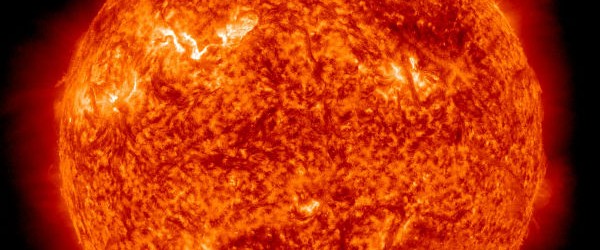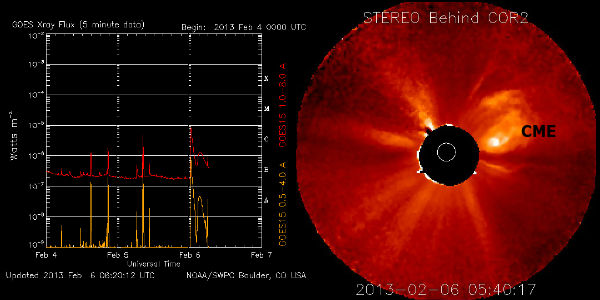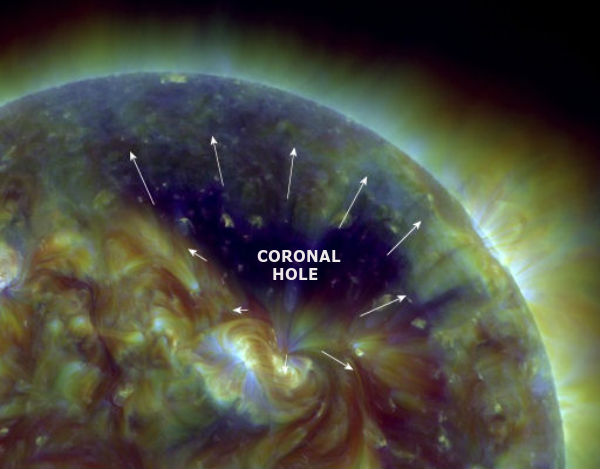Source: The Watchers - 2/06/13, By Chillymanjaro

A solar flare registered as C8.7 was detected at 00:21 UTC on February 6, 2013. The source of the flare was decaying Active Region 1667. According to images from NASA’s STEREO-B spacecraft, the associated CME appears to be heading in the Earth direction, with expected time of arrival on February 8/9, 2013.
ALERT: Type II Radio Emission
Begin Time: 2013 Feb 06 0013 UTC
Estimated Velocity: 548 km/s
Description: Type II emissions occur in association with eruptions on the sun and typically indicate a coronal mass ejection is associated with a flare event.ALERT: Type IV Radio Emission
Begin Time: 2013 Feb 06 0017 UTC
Description: Type IV emissions occur in association with major eruptions on the sun and are typically associated with strong coronal mass ejections and solar radiation storms.
During the eruption of C8.7 solar flare around Sunspot 1667. SolarHam posted great video of a blob of plasma above the blast site, captured “spinning like a Tornado vortex”.
Huge coronal hole has opened up in the sun’s northern hemisphere and it is spewing a stream of solar wind which should reach Earth’s orbit on February 7/8, 2013. The solar wind stream will bring a glancing blow and polar auroras later this week.
Featured image: SDO’s AIA 304 (Courtesy of NASA/SDO and the AIA, EVE, and HMI science teams.)



